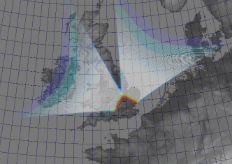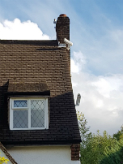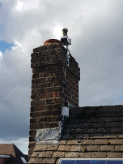Welcome to NEMETODE
Network for Meteor
Triangulation and Orbit Determination
Jim Rowe East Barnet, North London, England |
Camera / Lens Combination: Watec 902H2 Ultimate / Tamron_GL412IRDD (with C-CS Adaptor), Az 299.8, Ev 35.1 Watec 902H2 Ultimate / Computar HG3Z4512FCS-IR, Az 029.8, Ev 33.3 Basler Ace 1300-gm30 / Focusafe FS12520FEMP (1.25mm f2) |
||
I set up my cameras in East Barnet, North London in 2016 though have been interested in meteors and meteorites since being able to see and touch a huge chunk of the Canyon Diablo iron meteorite in the Canterbury museum in my home town of Christchurch, New Zealand. As a teenager around 1980 I wrote to the curators of all the major meteorite collections in the world for information and one, Professor Brian Mason of the Smithsonian Institution, nominated me for membership of The Meteoritical Society. For a while I was the only New Zealand-based member, but I really struggled with the long articles on cosmochemistry in the Proceedings so my membership didn’t last too long. I found out many years later that Brian Mason had studied in Christchurch and must have been tickled to get a letter from a kid in his home town. |
||


